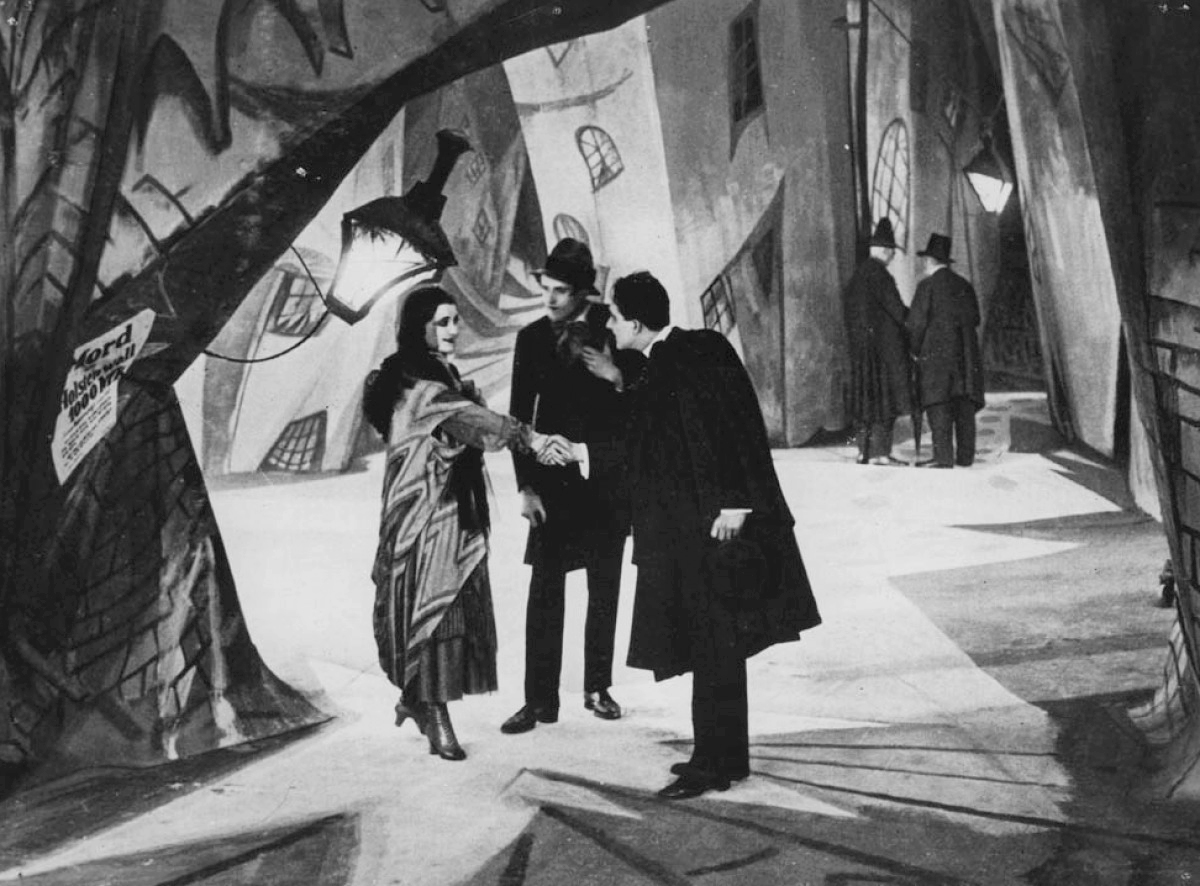The first Expressionist films, The Student of Prague, The Cabinet of Dr. Caligari (1920), The Golem Destiny (1921), Nosferatu (1922), Phantom (1922), Schatten (1923), and The Last Laugh (1920), (1924), were regarded as highly symbolic and stylized.
Various European cultures of the 1920s had embraced a willingness to look to the future by experimenting with bold, new ideas and artistic styles. The first Expressionist films made up for a lack of lavish budgets by using set designs with incredibly non-realistic, absurd sets, along with designs painted on walls and floors to represent lights, shadows, and objects. The plots and stories of the Expressionist films often dealt with madness, insanity, betrayal, and other "intellectual" topics (as opposed to standard action-adventure and romantic films). Later films often categorized as part of the brief history of German Expressionism include Metropolis (1927) and M (1931), both directed by Fritz Lang.
The extreme non-realism of Expressionism was short-lived, fading away after only a few years. However, the themes of Expressionism were integrated into later films of the 1920s and 1930s, resulting in an artistic control over the placement of scenery, light, etc. to enhance the mood of a film. This dark, moody school of film making was brought to America when the Nazis gained power and a number of German filmmakers emigrated to Hollywood. These German directors found American movie studios willing to embrace them, and several German directors and cameramen flourished there, producing a large amount of Hollywood films that had a profound effect on film as a whole.
Two genres that were especially influenced by Expressionism are horror film and film noir. Carl Laemmle and Universal Studios had made a name for themselves by producing such famous horror films of the silent era as Lon Chaney's 'The Phantom of the Opera'. German filmmakers such as Karl Freund (the cinematographer for Dracula in 1931) set the style and mood of the Universal monster movies of the 1930s with their dark and artistically designed sets, providing a model for later generations of horror films. Directors such as Fritz Lang, Billy Wilder, Otto Preminger, Alfred Hitchcock, Orson Welles, Carol Reed and Michael Curtiz introduced the Expressionist style to crime dramas of the 1940s, expanding Expressionism's influence on modern film making.
(left: Das Cabinet des Dr. Caligari, 1920, Robert Wiene)
Various European cultures of the 1920s had embraced a willingness to look to the future by experimenting with bold, new ideas and artistic styles. The first Expressionist films made up for a lack of lavish budgets by using set designs with incredibly non-realistic, absurd sets, along with designs painted on walls and floors to represent lights, shadows, and objects. The plots and stories of the Expressionist films often dealt with madness, insanity, betrayal, and other "intellectual" topics (as opposed to standard action-adventure and romantic films). Later films often categorized as part of the brief history of German Expressionism include Metropolis (1927) and M (1931), both directed by Fritz Lang.
The extreme non-realism of Expressionism was short-lived, fading away after only a few years. However, the themes of Expressionism were integrated into later films of the 1920s and 1930s, resulting in an artistic control over the placement of scenery, light, etc. to enhance the mood of a film. This dark, moody school of film making was brought to America when the Nazis gained power and a number of German filmmakers emigrated to Hollywood. These German directors found American movie studios willing to embrace them, and several German directors and cameramen flourished there, producing a large amount of Hollywood films that had a profound effect on film as a whole.
Two genres that were especially influenced by Expressionism are horror film and film noir. Carl Laemmle and Universal Studios had made a name for themselves by producing such famous horror films of the silent era as Lon Chaney's 'The Phantom of the Opera'. German filmmakers such as Karl Freund (the cinematographer for Dracula in 1931) set the style and mood of the Universal monster movies of the 1930s with their dark and artistically designed sets, providing a model for later generations of horror films. Directors such as Fritz Lang, Billy Wilder, Otto Preminger, Alfred Hitchcock, Orson Welles, Carol Reed and Michael Curtiz introduced the Expressionist style to crime dramas of the 1940s, expanding Expressionism's influence on modern film making.

No comments:
Post a Comment